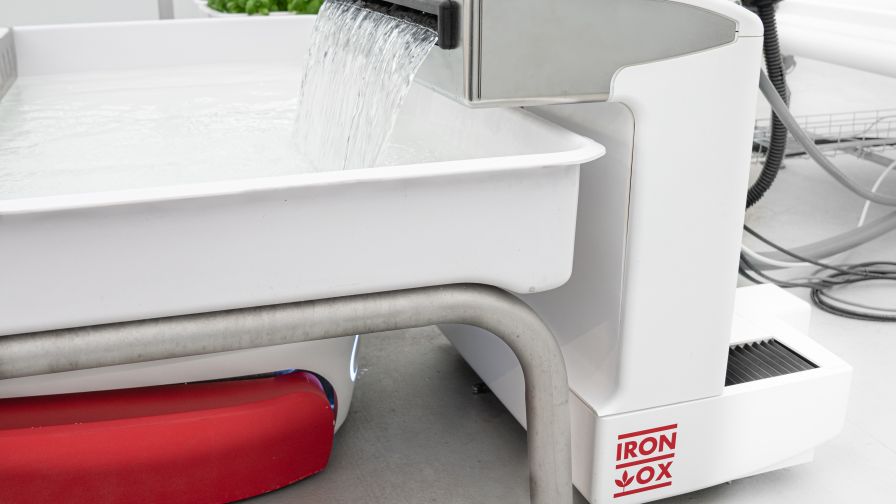How a New Greenhouse Robot Monitors Plants’ Water and Nutrient Mix
 Iron Ox, a farming innovation company that focuses on plant science, robotics, and artificial intelligence, has announced its second ground-breaking greenhouse robot, Phil. Phil is a critical addition to the Iron Ox ecosystem that optimizes plant yield, expands growth cycles, and maximizes crop quality. Its state-of-the-art sensor technology identifies trends in each module’s water and nutrient mix, measuring nutrient content and pH levels with speed and precision. Phil is equipped with ultraviolet LEDs for quick and efficient sanitizing without producing waste.
Iron Ox, a farming innovation company that focuses on plant science, robotics, and artificial intelligence, has announced its second ground-breaking greenhouse robot, Phil. Phil is a critical addition to the Iron Ox ecosystem that optimizes plant yield, expands growth cycles, and maximizes crop quality. Its state-of-the-art sensor technology identifies trends in each module’s water and nutrient mix, measuring nutrient content and pH levels with speed and precision. Phil is equipped with ultraviolet LEDs for quick and efficient sanitizing without producing waste.
“The clever thing with Phil is that we can adjust each of the thousands of modules in our Texas greenhouse to grow the same and/or a variety of crops under different nutrient profiles, which in our controlled environment, rapidly accelerates our understanding of plant science,” says Brandon Alexander, Iron Ox CEO. “This allows our team to optimize for the market demand, while giving each plant exactly what it needs.”
Phil is integrated into the Iron Ox greenhouse system, with all the data it collects going into the company’s agricultural dataset. This data informs the plant scientist’s optimization strategies. For example, when the grower brings a module in for a checkup, the amount of water and nutrient content may vary based on different conditions, and the team may see a trend that provides valuable information on water or nutrient usage for each plant varietal.
Phil quickly and precisely fills each 6-by-6-foot plant module in under two minutes. Grover, the recently announced autonomous mobile robot, transports plant modules and docks with Phil, who, using its advanced sensors, hygienically fills it precisely to the required volume and nutrient mix. The module is now ready for Grover to retrieve it and deliver it to its next destination.
“The addition of Phil enables fast throughput of plant modules in an efficient and foodsafe process,” says Sarah Osentoski, Iron Ox Senior Vice President of Engineering. “Phil’s advanced sensors give the teams of plant and data scientists valuable information to optimize the entire closed-loop system of Iron Ox’s greenhouses.”
In addition, Grover brings Phil modules for checkups throughout each plant module’s growth cycle. Phil first takes a small sample of the water and nutrient mix. That sample goes into a reservoir equipped with sensors to measure the nutrient content and pH of the module. Iron Ox’s plant science team uses these data to understand how the plants are consuming water, and the nutrients and at what rate.
Phil then senses the water level and adjusts it to match its target settings. Another sample is taken for validation. When Phil is done with his work, Grover takes the plant module back to its respective place in the greenhouse.
Phil is another asset in Iron Ox’s closed-loop proprietary system that uses artificial intelligence, machine learning, robotics, and hydroponics. The company’s technology currently produces a wide variety of crops, including herbs and lettuces, while using a small fraction of the land, water, and energy compared to food grown on conventional farms.
Iron Ox operates farms in Northern California and earlier this year broke ground on a 535,000 square-foot indoor farm in Lockhart, TX. The company is significantly scaling up, with its robotics fleet working alongside an expanding team of plant scientists, growers, roboticists, and data scientists.










